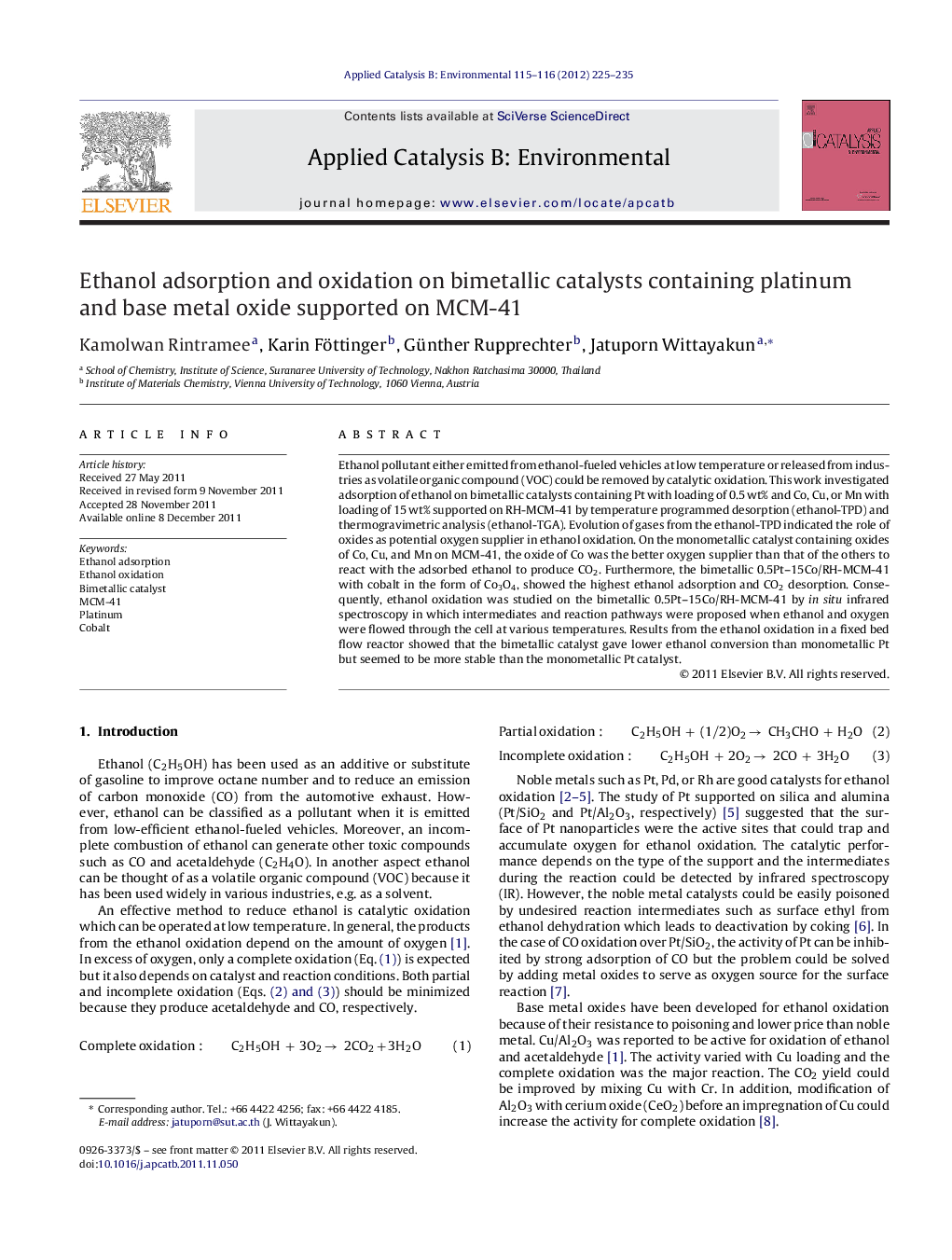| Article ID | Journal | Published Year | Pages | File Type |
|---|---|---|---|---|
| 46424 | Applied Catalysis B: Environmental | 2012 | 11 Pages |
Ethanol pollutant either emitted from ethanol-fueled vehicles at low temperature or released from industries as volatile organic compound (VOC) could be removed by catalytic oxidation. This work investigated adsorption of ethanol on bimetallic catalysts containing Pt with loading of 0.5 wt% and Co, Cu, or Mn with loading of 15 wt% supported on RH-MCM-41 by temperature programmed desorption (ethanol-TPD) and thermogravimetric analysis (ethanol-TGA). Evolution of gases from the ethanol-TPD indicated the role of oxides as potential oxygen supplier in ethanol oxidation. On the monometallic catalyst containing oxides of Co, Cu, and Mn on MCM-41, the oxide of Co was the better oxygen supplier than that of the others to react with the adsorbed ethanol to produce CO2. Furthermore, the bimetallic 0.5Pt–15Co/RH-MCM-41 with cobalt in the form of Co3O4, showed the highest ethanol adsorption and CO2 desorption. Consequently, ethanol oxidation was studied on the bimetallic 0.5Pt–15Co/RH-MCM-41 by in situ infrared spectroscopy in which intermediates and reaction pathways were proposed when ethanol and oxygen were flowed through the cell at various temperatures. Results from the ethanol oxidation in a fixed bed flow reactor showed that the bimetallic catalyst gave lower ethanol conversion than monometallic Pt but seemed to be more stable than the monometallic Pt catalyst.
Graphical abstractFigure optionsDownload full-size imageDownload as PowerPoint slideHighlights► CO2 was generated from ethanol desorption from Co/MCM-41 and Pt–Co/MCM-41. ► Possible adsorption modes and surface species were proposed. ► Surface species from ethanol oxidation on Pt and Pt–Co catalysts were confirmed. ► The mechanisms of ethanol oxidation were proposed. ► The Pt was more active than the Pt–Co catalyst but seemed to deactivate faster.
